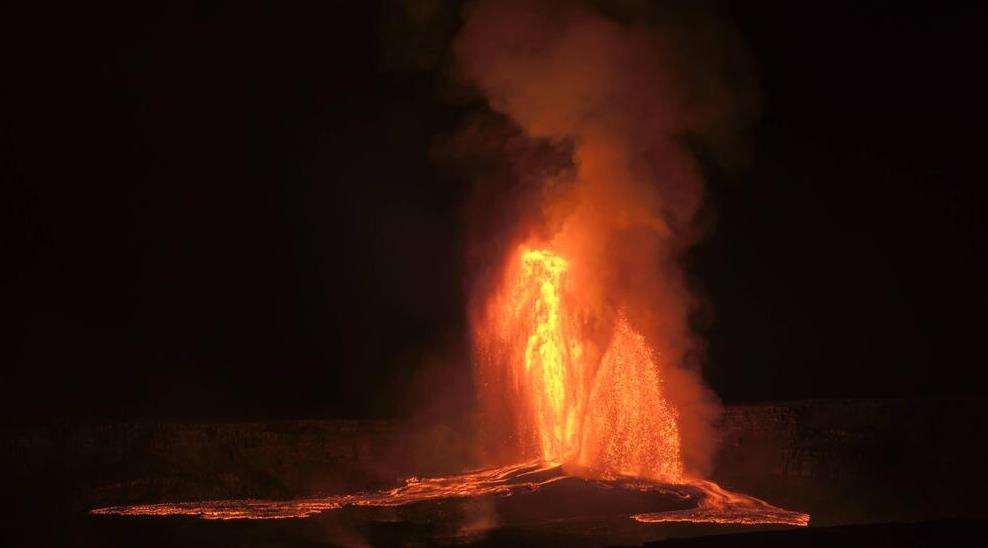Kilauea’s 34th eruption phase has begun – Lava fountains over 100 m high
On October 1 at 12:53 a.m. HST, the 34th episode of the ongoing eruption began at the summit of Kīlauea. Activity had already been building for days with more than 120 so-called gas-piston events, which produced small spattering fountains and short lava overflows. These events started on September 28, occurring irregularly at first, but by September 29 they had become increasingly rhythmic and culminated during the night of September 30.
The transition to the actual episode occurred on September 30 at 11:43 p.m., when lava fountains about 10 meters high first rose from the northern vent. With the onset of summit deflation at 12:53 a.m., activity intensified significantly. The fountains are currently reaching heights of up to 100 meters, tilting slightly to the northeast, and feeding lava flows within the Halemaʻumaʻu Crater.
Earlier episodes had produced fountains over 300 meters high, with ash plumes rising as much as 6,000 meters. The current activity is more moderate, yet remains a spectacular display.
According to the U.S. Geological Survey and the National Park Service, moderate winds are blowing from the northeast, which could carry volcanic gases and fine material southwest of the crater. Air traffic, however, is unaffected: Kona (KOA) and Hilo (ITO) airports are operating normally.
Several livestreams provide real-time views: V1cam, V2cam, and V3cam show the eruptive fountains directly, while KPcam and MKcam are used to assess fountain heights.
Whether Episode 34 will last only a day, like most previous phases, or continue longer remains uncertain. What is clear is that Kīlauea remains one of the most active volcanoes on Earth.
